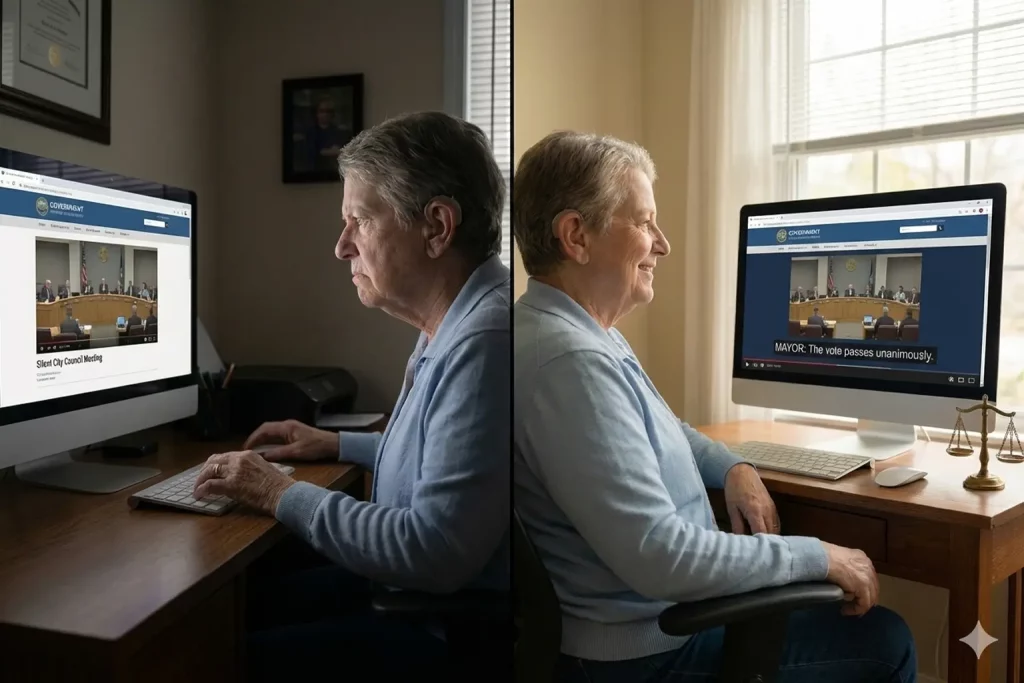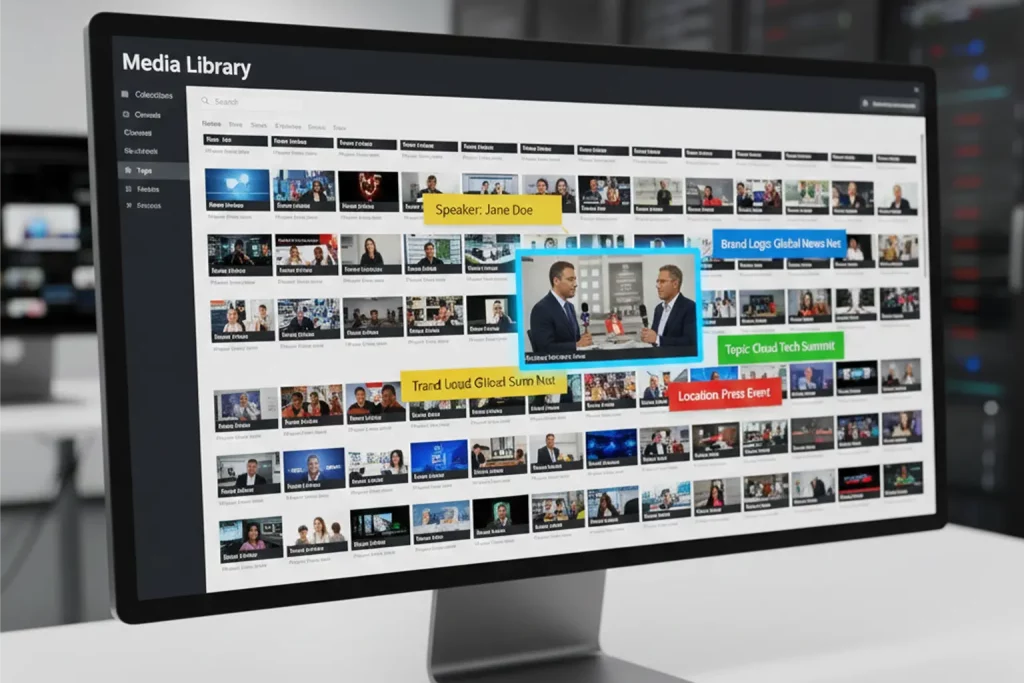Live captions have been immensely helpful to students as well as professionals. From classrooms to meeting rooms, there are numerous use cases where live captions have helped people to have a better understanding, improved their comprehension, and not to mention provided accessibility to everyone.
But before we delve into the benefits of live captions, we need to understand them.
What are live captions?
The W3C Accessibility Guidelines (WCAG) 3.0 describe live captions as a means to enable people who are deaf or hard of hearing to access real-time presentations. It further elaborates on live captions to be provided as a part of the content via the audio track. Live captions should include dialogues and identify speakers, sound effects, and any other significant audio.
Similarly, Described and Captioned Media Program (DCMP) defines live captions as real-time captions, which are captions that are generated and displayed at the time of program origination. Real-time captions are often displayed on black background with white letters. Real-time captions, also known as live captions, were started by National Captioning Institute in 1982.
Live captions are generated simultaneously and transmitted at the time of the origination of the video. Specially trained captioners work to generate real-time or live captions. Events where live or real-time captioning is used can be identified as – lectures or presentations, council meetings, seminars, live sporting events, news broadcasts, or any other event that can be identified as live.
Benefits of live captions –
Better accessibility – Live captions ensure accessibility for all. From (d)Deaf or hard-of-hearing users to users who use English as a second language, everyone benefits from having live captions. Students and professionals benefit from having live captions in their lectures, meetings, or live streams.
Increased engagement – Having live captions increases comprehension and thus contributes to increasing attention. Live captions give people a better context and understanding of the video they are consuming. This is especially helpful in the classroom and training environments where captions enable people to familiarize themselves with the content.
Improved SEO – Search engines love captions as well as transcriptions. Adding live captions to your videos along with captions increases their chances of being ranked higher by the search engines like Google. Search engines aren’t built on understanding the video; they can identify keywords and organize the related content that matches the search query. Thus, just uploading videos won’t suffice. A video with captions will have a better ranking than one without them. Search engines will rely on video descriptions and metadata without captions or transcriptions. While it’s good, it’s no match for videos with live captions.




